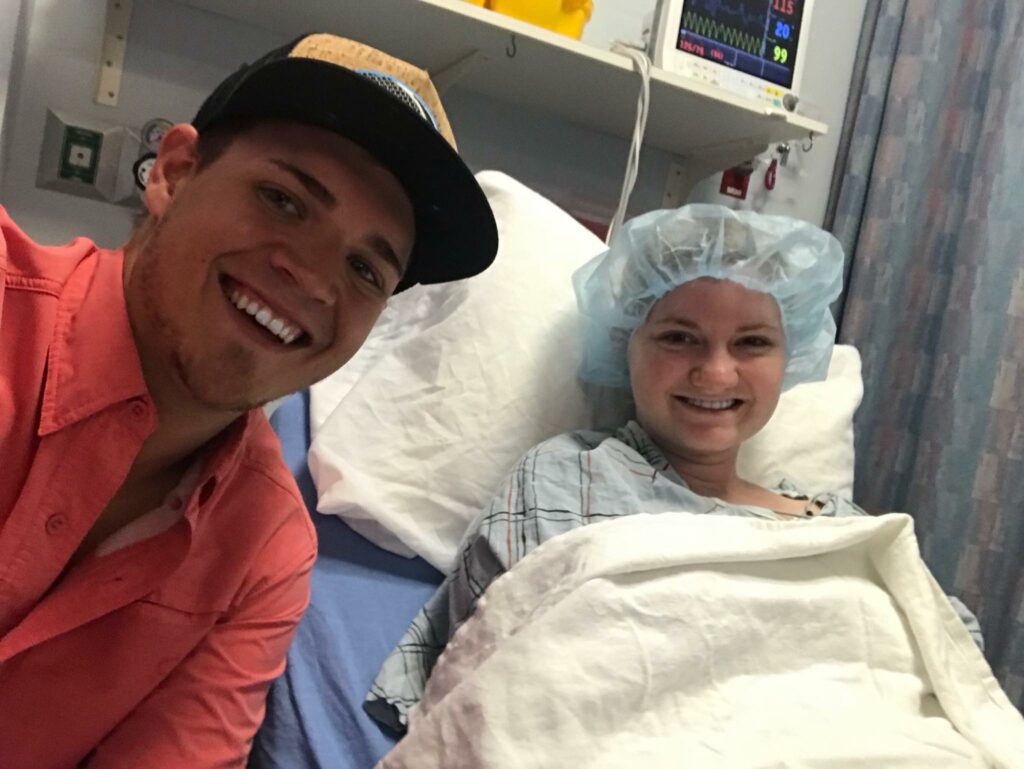Clay and Beranda Mock Share Their Story as they Continue Their Journey to Parenthood
by LENORE DEVORE
She was 23. He was 19. They were young, but Beranda didn’t have time to play games. She told Clay Mock right away that she only wanted a serious relationship, one that would involve getting pregnant quickly. Time was not on her side.
That was August 2015; a year later, Beranda and Clay Mock married. When most new couples are having fun, the Mocks researched ways to have a baby.
Trouble started as a teen for Beranda, who has Polycystic Ovary Syndrome, a disorder that often starts with irregular menstrual periods. Beranda says she suffered throughout high school, when she was placed on birth control — a treatment option.
But it wasn’t working. As she bled for eight months straight, her hair fell out, her nails grew brittle and her skin peeled.
“I didn’t feel good,” Beranda says. “I felt really unhealthy. I really wanted to get off the birth control because I felt that it was making me sick.”
She went to do the doctor and endured blood work and ultrasounds, which revealed a hormone imbalance and multiple cysts. After trying various drugs, her doctor told her in late 2015 there was nothing more she could do. “She told me it would be really hard for me to have children,” she says.
The Haines City couple started seeing a fertility specialist in Tampa. At 23, she knew time was limited. Once she hit 30, her chances of getting pregnant would be severely reduced.
Then came another blow: They found out Clay has a severely low sperm count.
“The only way we would be able to get pregnant was by IVF (in vitro fertilization),” Beranda says. “Doing IVF, we would have about an 80 percent chance of (having) a child. We wanted to have all the chances we could.”
To get to May 16, when doctors retrieved 16 eggs from Beranda, Clay, 21, gave her hormone shots in the stomach. “He was great,” she says.
She’s documented their struggle on the Facebook page, “The Struggle is Part of the Story.” Now 25, she plans to continue the page to help other women who are facing the same challenges and to encourage the 35 states, including Florida, that do not mandate health insurers cover fertility treatments to change their laws
One reason she left her Lakeland job was to work for a company, National General Insurance Co. in Tampa, that offered up to $10,000 in fertility coverage. She still has to pay the $3,000 deductible, and when things got tough, she started a GoFundMe account, which raised the remaining $600 she needed for $4,000 in medicine.
“It’s extremely expensive,” she says. “I didn’t think we’d have the money, but I went forward and prayed that everything would work out fine.”
After retrieving the eggs, doctors injected Clay’s sperm into them in the lab. They will watch the eggs grow for seven days before placing two embryos into her uterus. That gives her a better chance at pregnancy, but also raises the chance of having twins to 20 percent. But neither she nor Clay worry about that.
“Infertility is something that I never imagined,” he says. “We are really looking forward to finally starting our little family. The one thing I’m looking forward to the most is seeing my amazing wife … holding the baby for the first time and see the smile and love in her eyes.”
Beranda is looking forward to having a baby shower and gender reveal party. “If it is our last child we want to make sure we enjoy every moment of the process.”
She plans to post photos of her child on the their Facebook page. “I’ve had hundreds of other women telling me that they have similar issues and that they have no one to talk to,” she says. “With infertility, stillbirths, and miscarriages, not many people talk about it at all. It’s very secretive. You shouldn’t be ashamed.”
Berney Wilkinson, a Lakeland psychologist, says family and friends can help.
“When a couple is unable to have a child, there is often a great deal of stress, disappointment, or even self-loathing that may rise to the surface,” Wilkinson says. “Couples in this situation need support, encouragement, and understanding from loved ones. Although there is little that the loved ones can directly do … their love and support can provide the stress relief needed to assist the couple through this challenging time.”
